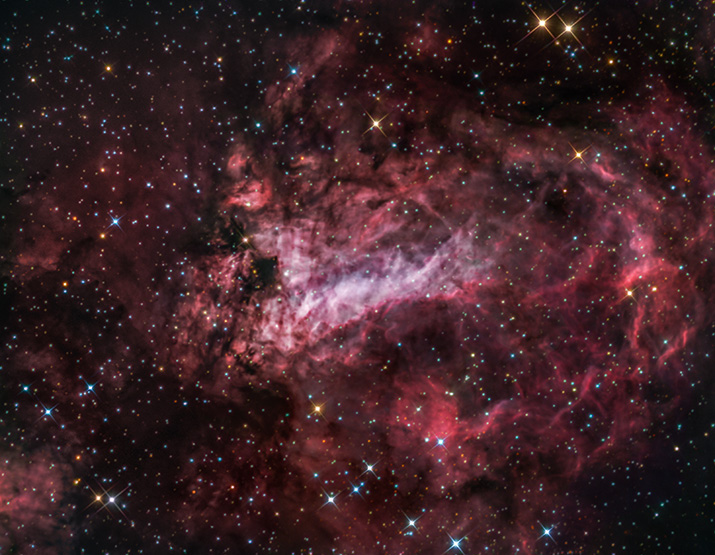
|
Date: June 21-24-25, 2020 - Location: Davis Mountains west of Fort Davis, TX Telescope: RC-10 inch Camera: Apogee F8300M Filters: Astrodon Tru-Balance Exposure: Ha = 340 min. Lum = 150 min. Red - Green - Blue = 120 min. each (Bin 2x2) Guided using Innovations Foresight On Axis Guider (ONAG) / ST8300M Click on the image below to view at higher resolution. |

|
M17, also called the Swan Nebula and sometimes the Omega Nebula, is a region of star formation and shines by excited emissions caused by the high-energy radiation of young stars. However, unlike many other emission nebula, these stars are not obvious in optical images, but are hidden within the nebula. Star formation is either still active in this nebula, or has ceased very recently. A small cluster of about 35 bright, but obscured, stars seems to be imbedded in the nebulosity. The color of the nebula is predominately reddish, with some graduation to pink. This color comes from hot hydrogen gas excited to shine by stars lying within the nebula. The nebula also radiates strongly from ionized oxygen. This is evident by a 'bluish' hue in, and around, the brighter portions of the nebula. The nebula contains a large amount of dark obscuring material comprised of dust and cold gas. The mass of the gas and dust in the Swan Nebula is estimated to be about 800 times that of the Sun. While the bright nebula seems to be roughly 15 light years across, the total gaseous cloud, including low-luminosity material, extends to at least 40 light years. M17 lies in the constellation Sagittarius at an estimated distance of 5,000 to 6,000 light years. 1http://messier.seds.org/m/m017.html
|